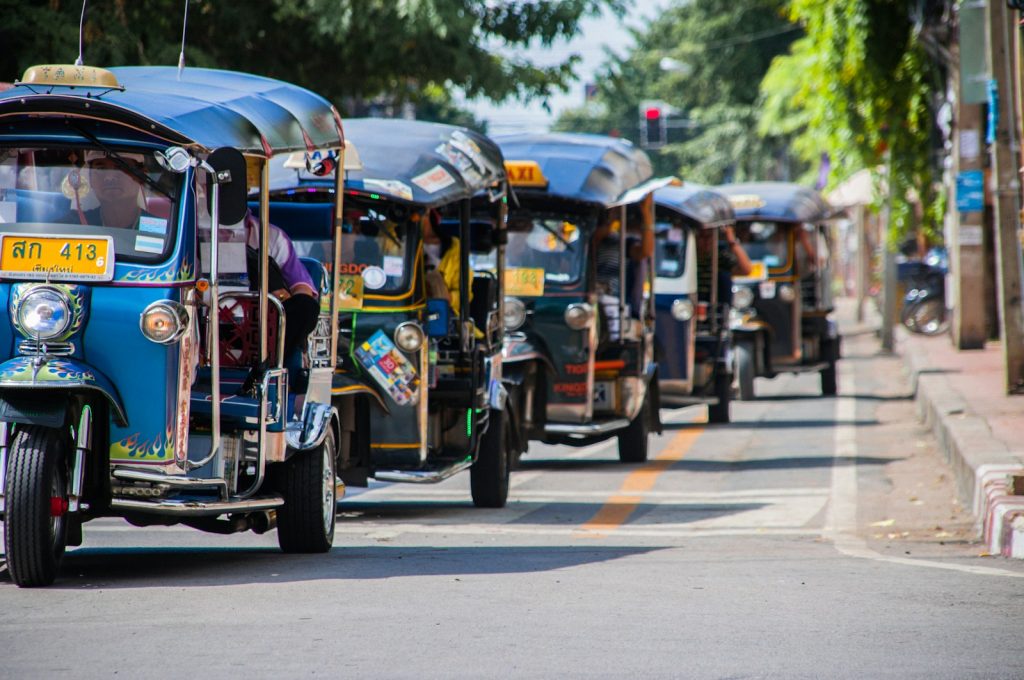The quintessential red trucks of Chiang Mai, a staple of the city’s public transportation system, are currently navigating through turbulent waters. This traditional mode of transport, beloved by locals and tourists alike for its uniqueness and accessibility, is witnessing a significant downturn in usage. The off-season for tourism has notably exacerbated the situation, casting a long shadow over their future viability. There is a growing concern that these iconic vehicles might soon be relegated to the pages of history books, remembered only through photographs.
Competition from Global Ride-Hailing Services
The advent of international ride-hailing giants like Grab and Bolt has introduced a new level of competition, previously unseen by the operators of these distinctive red trucks. These platforms offer convenience, efficiency, and the ability to book rides with just a few taps on a smartphone, appealing to a tech-savvy generation and changing the dynamics of urban mobility in Chiang Mai. The ease of use, coupled with transparent pricing mechanisms, has made these services particularly attractive, not just to locals but also to international visitors, further eating into the customer base of the red trucks.
A Cultural Icon at Crossroads
Known locally as “songthaews,” these red trucks have long been more than just a means of transportation; they are a cultural symbol of Chiang Mai. Operating on a shared basis, they offer an affordable and efficient way for passengers to traverse the city. However, the shifting preferences towards privatized and individualized transport options pose a significant threat to their existence. The challenge now is not only about maintaining a competitive edge but also about preserving a piece of Chiang Mai’s heritage.
Looking Towards the Future
As these traditional vehicles stand at a crossroads, the question of adaptation arises. Will the red trucks evolve to meet the changing demands of the 21st century, or will they steadfastly hold onto tradition at the risk of obsolescence? Strategies such as embracing digital platforms for booking and payments, improving service routes, and enhancing the overall passenger experience could potentially bridge the gap between tradition and modernity. The goal would be to complement the city’s transport ecosystem rather than compete within an increasingly crowded marketplace.
In light of these challenges, the community’s role in supporting and preserving the iconic red trucks becomes crucial. By promoting a balanced coexistence with international ride-hailing services, there is hope yet for these symbols of Chiang Mai’s vibrant streets to continue being an integral part of the city’s charm and transport network. Only time will tell if these efforts will suffice in keeping the red trucks bustling along the scenic routes of this historic city.







